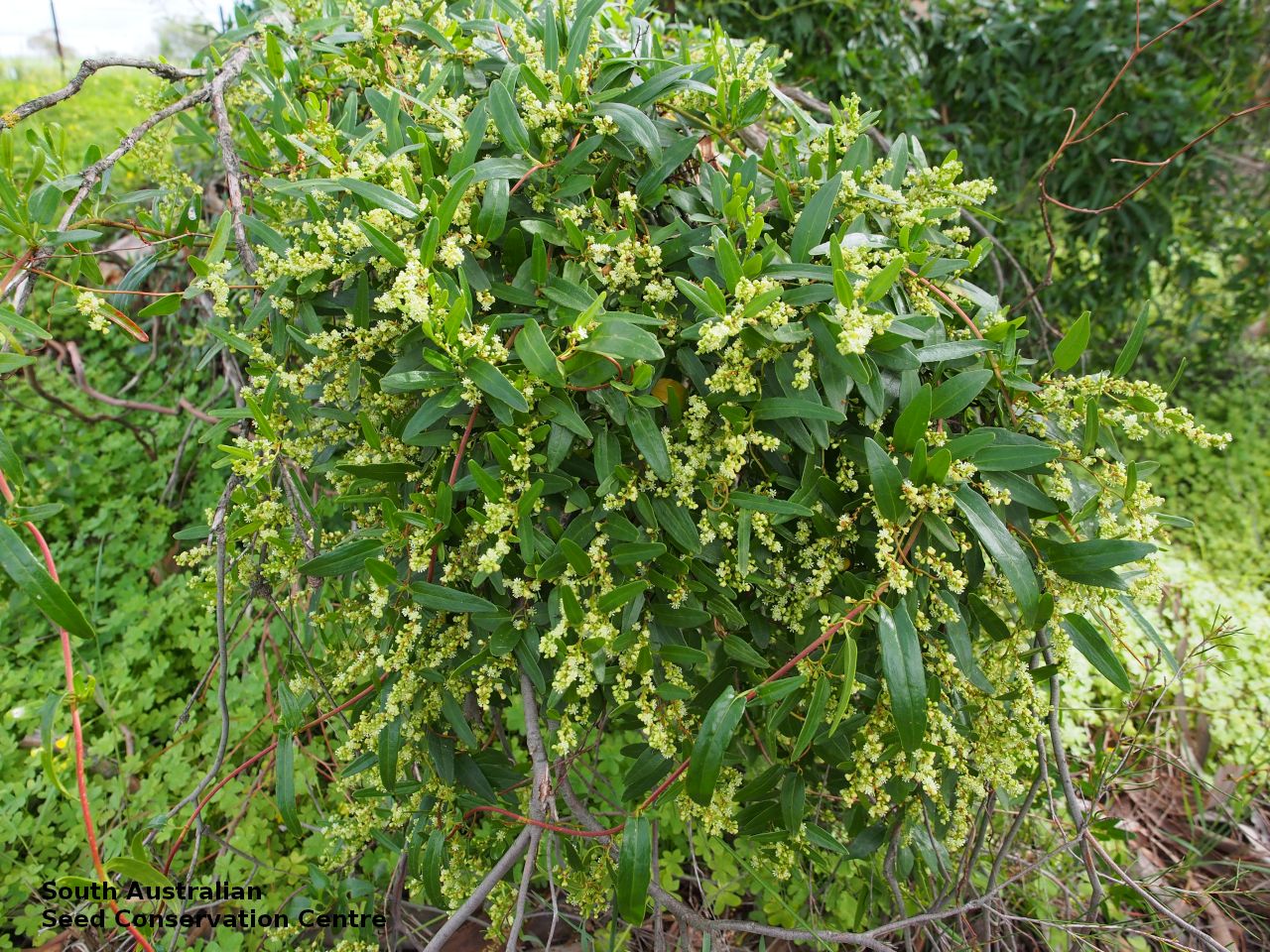
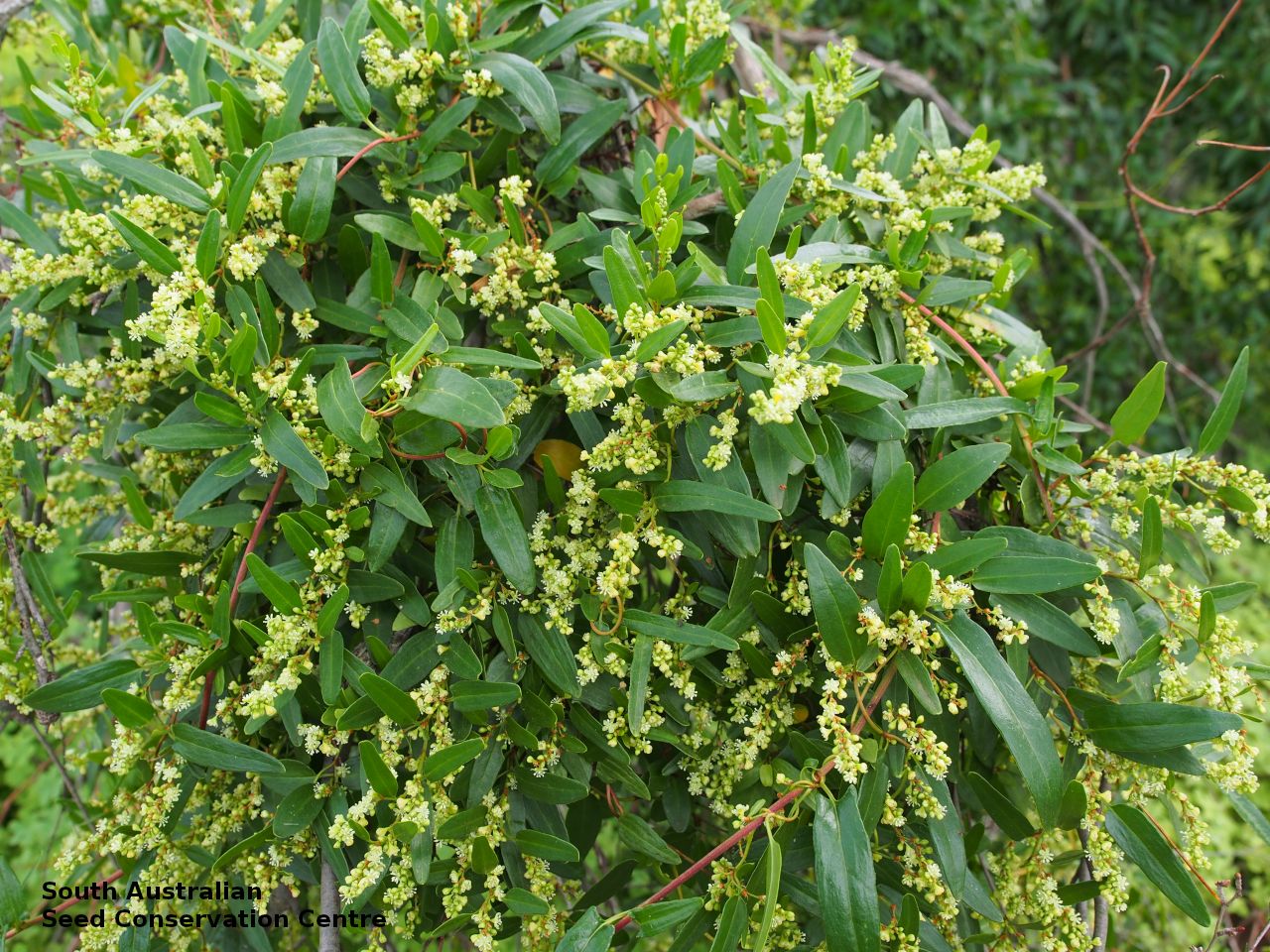
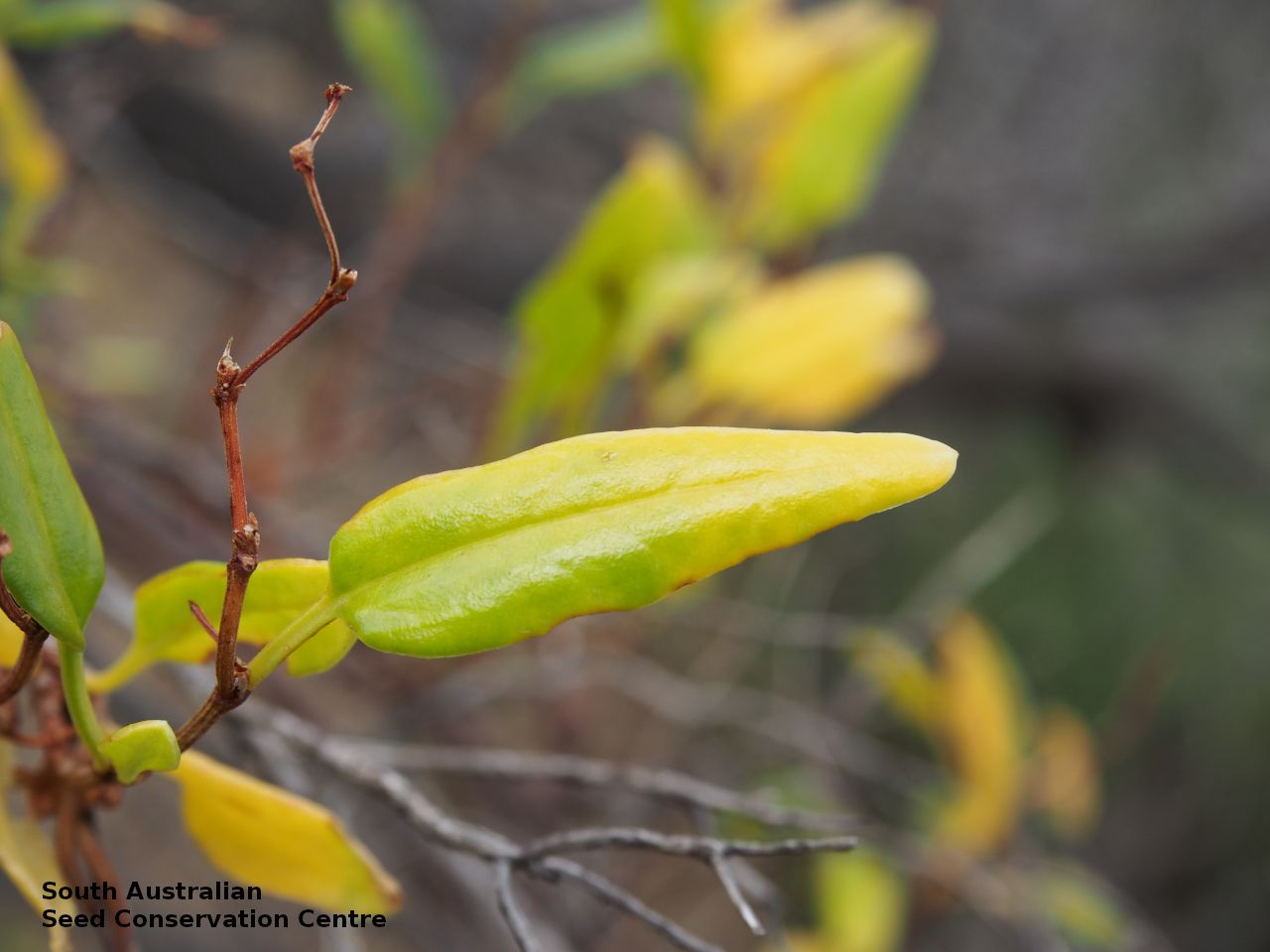
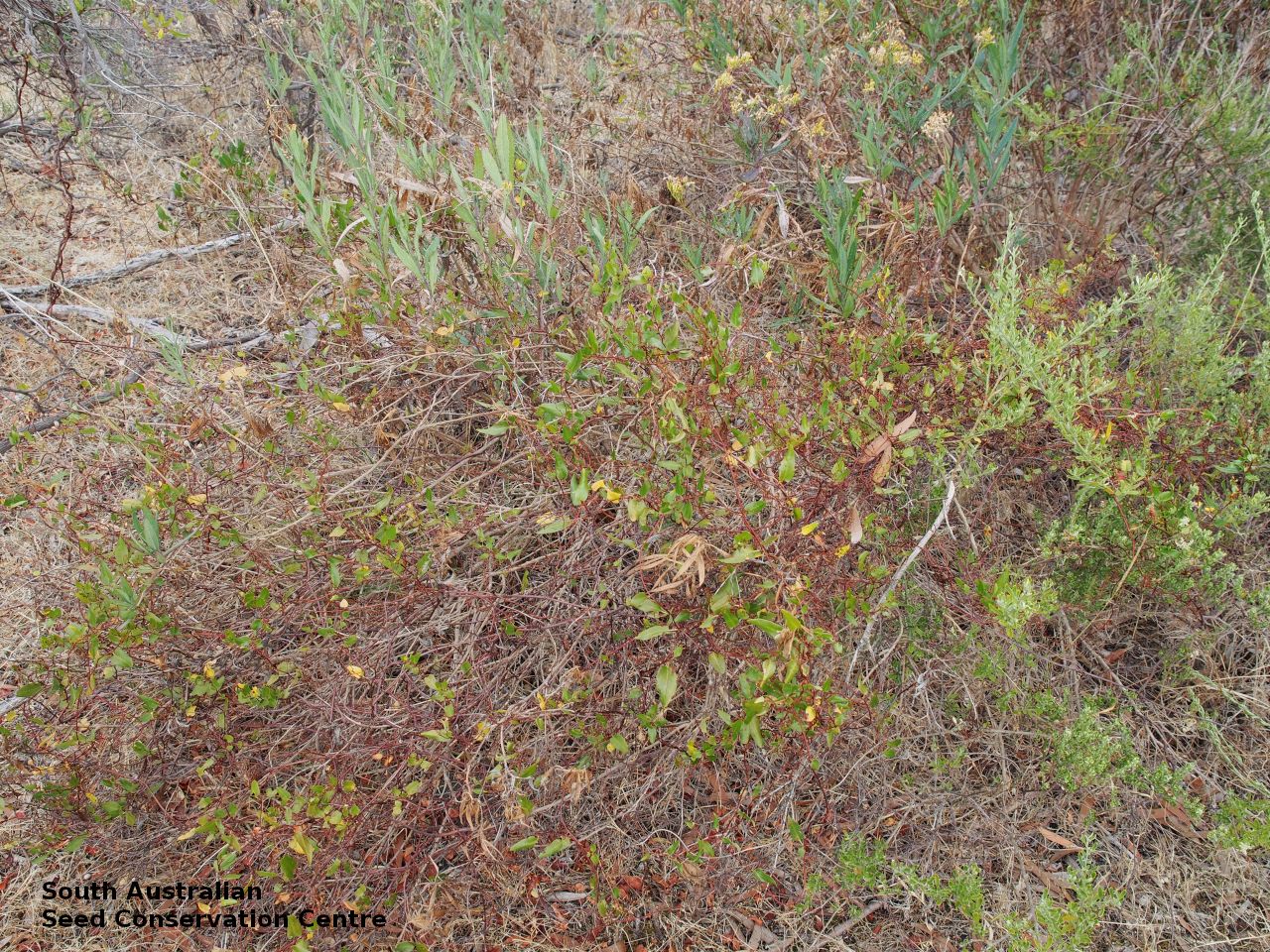
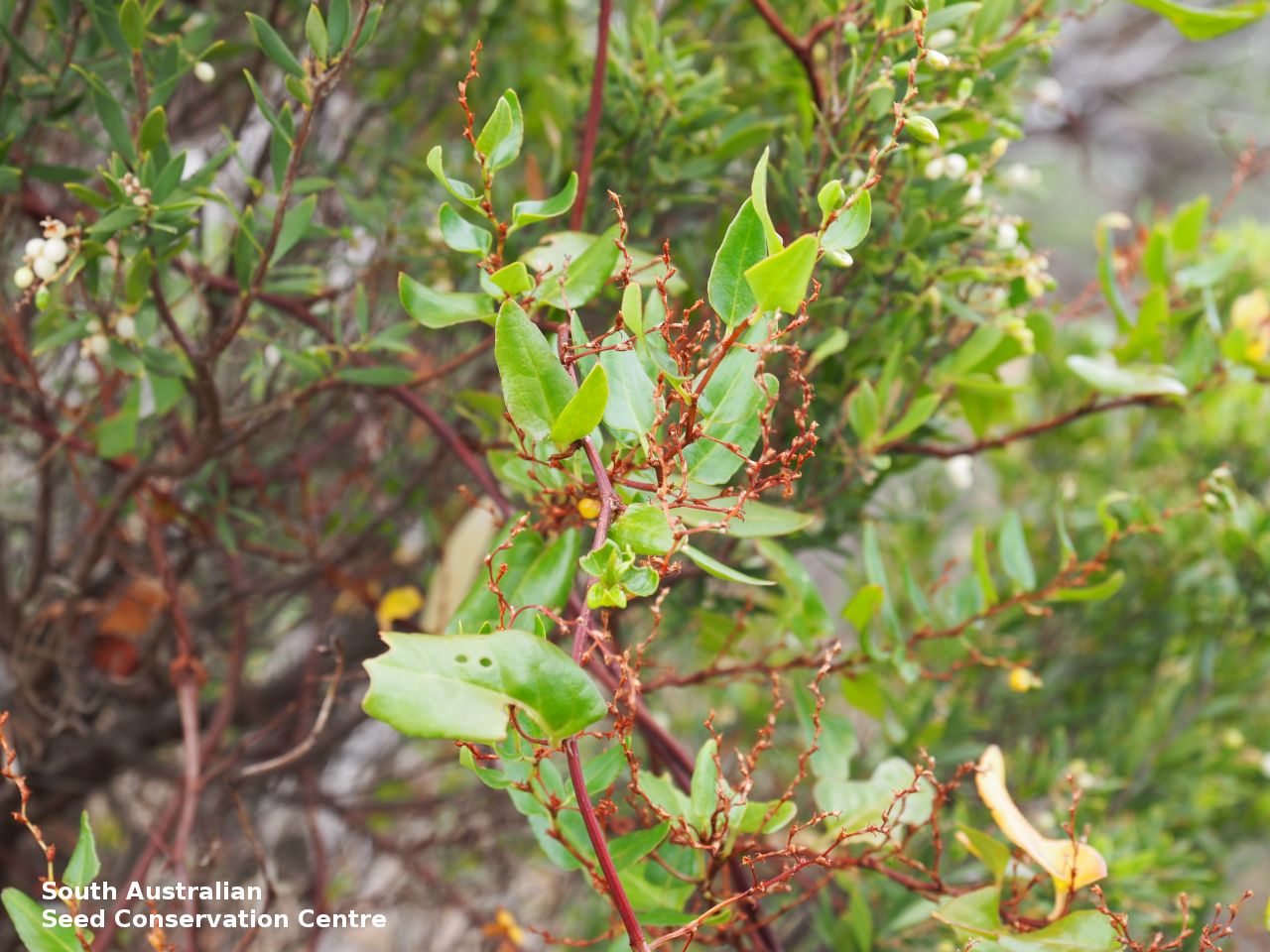
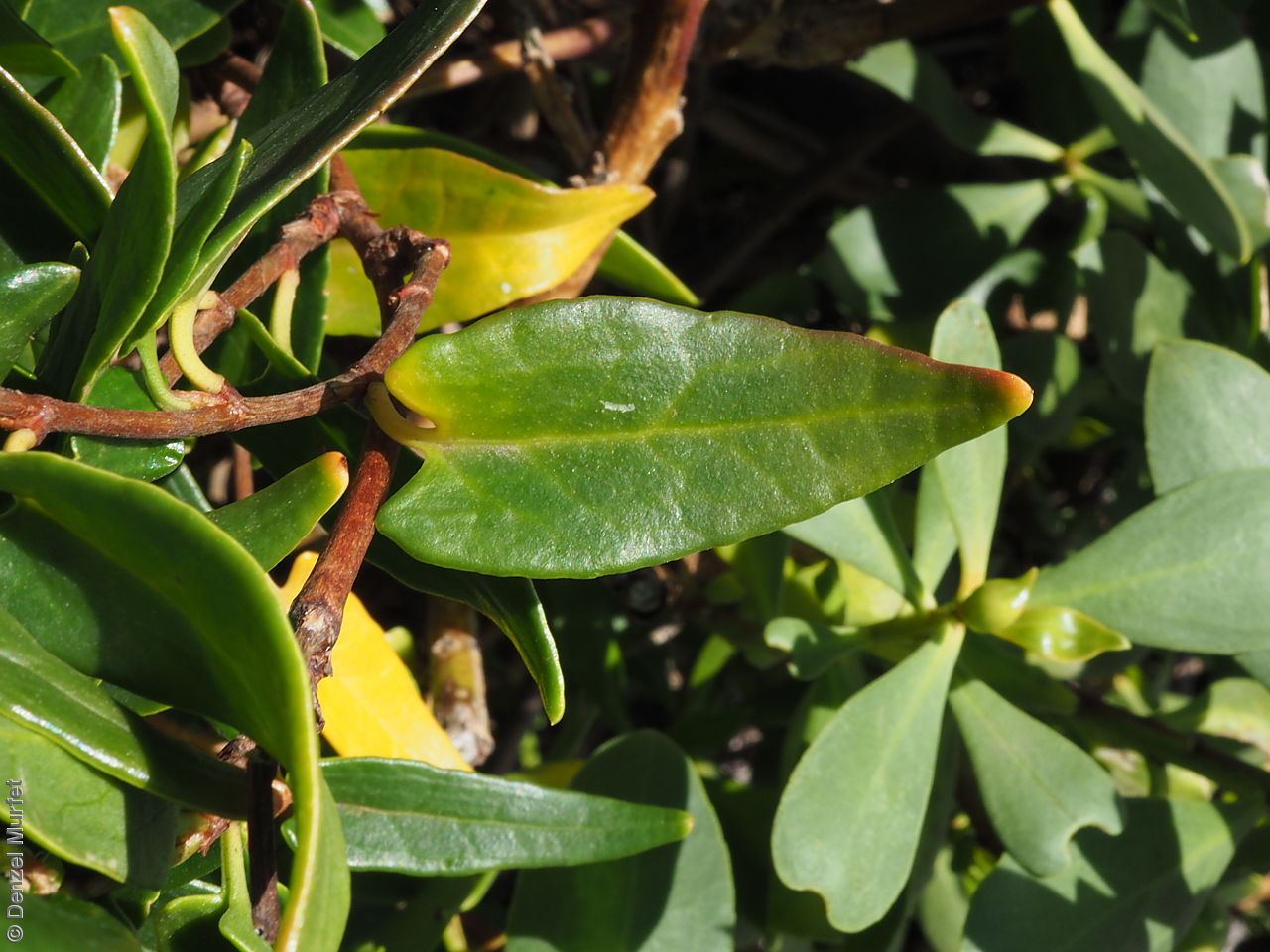
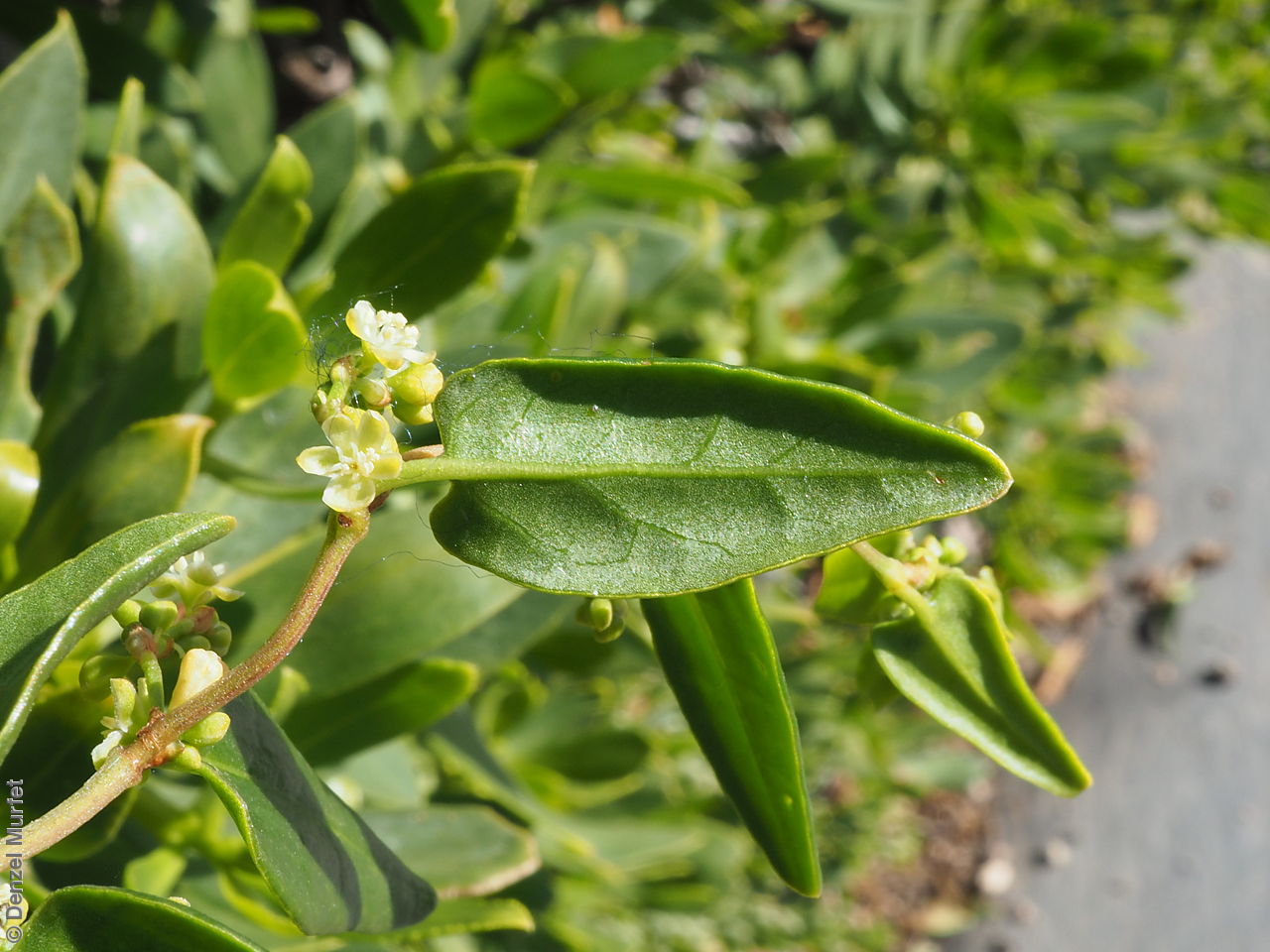
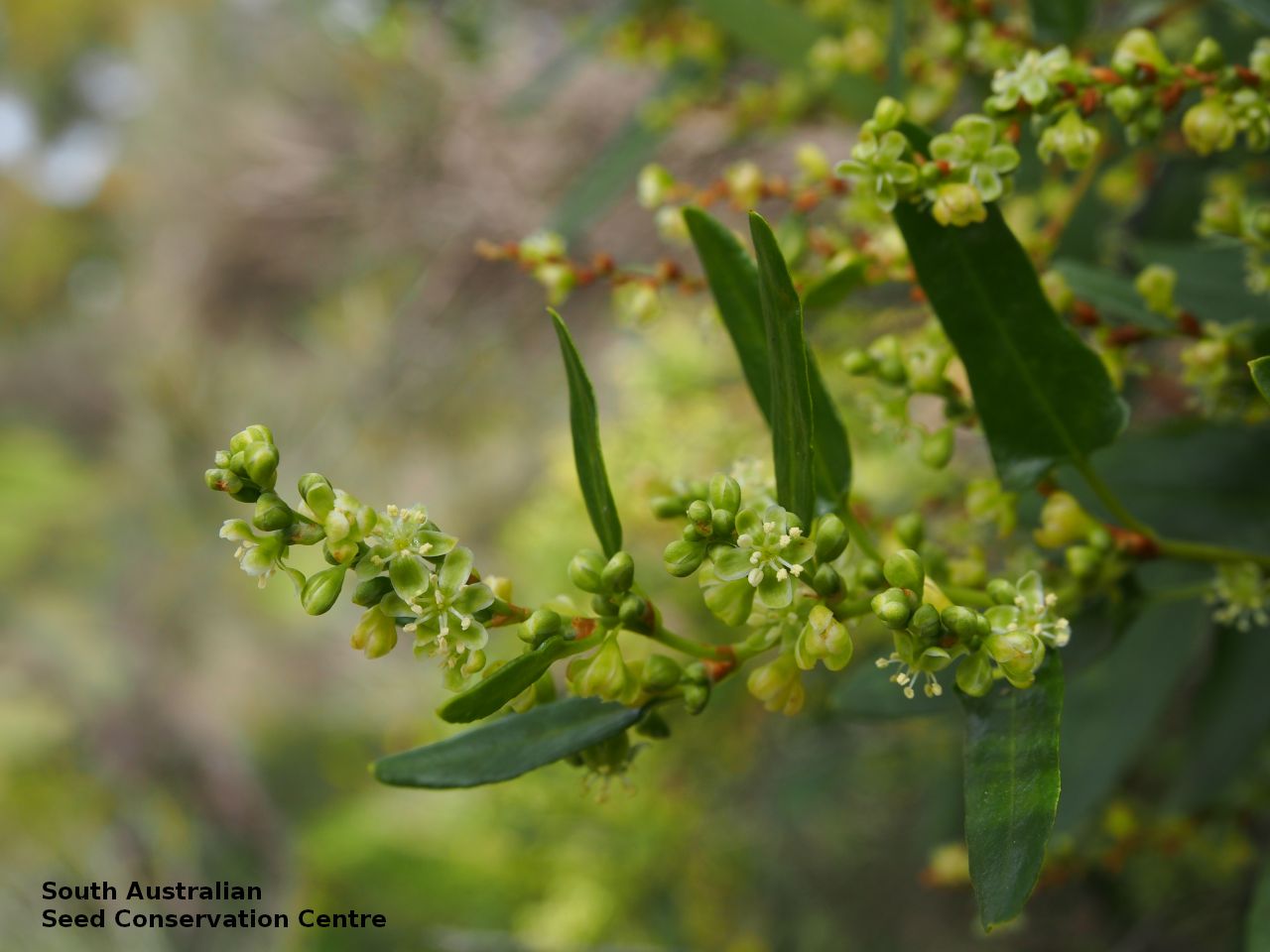
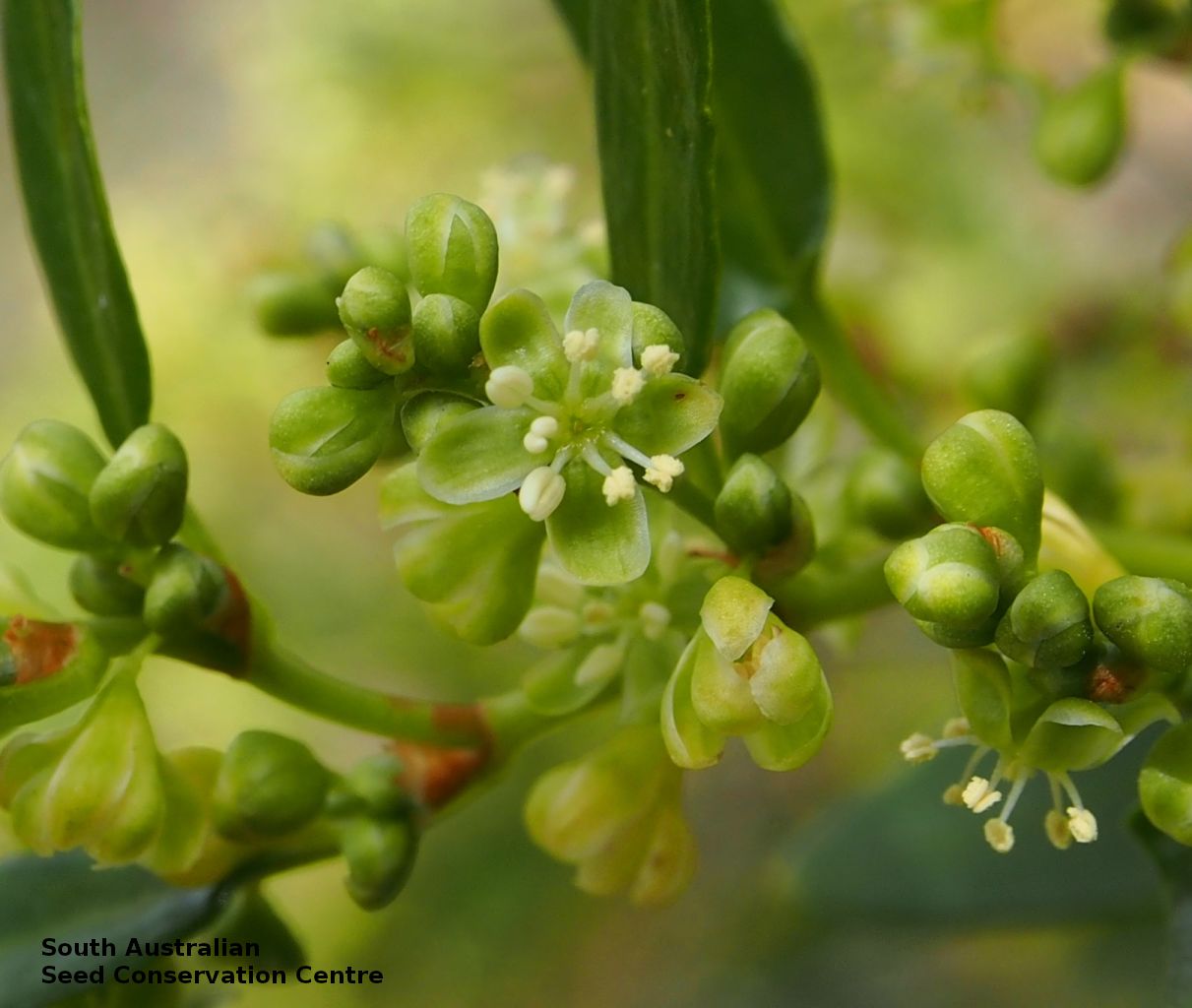
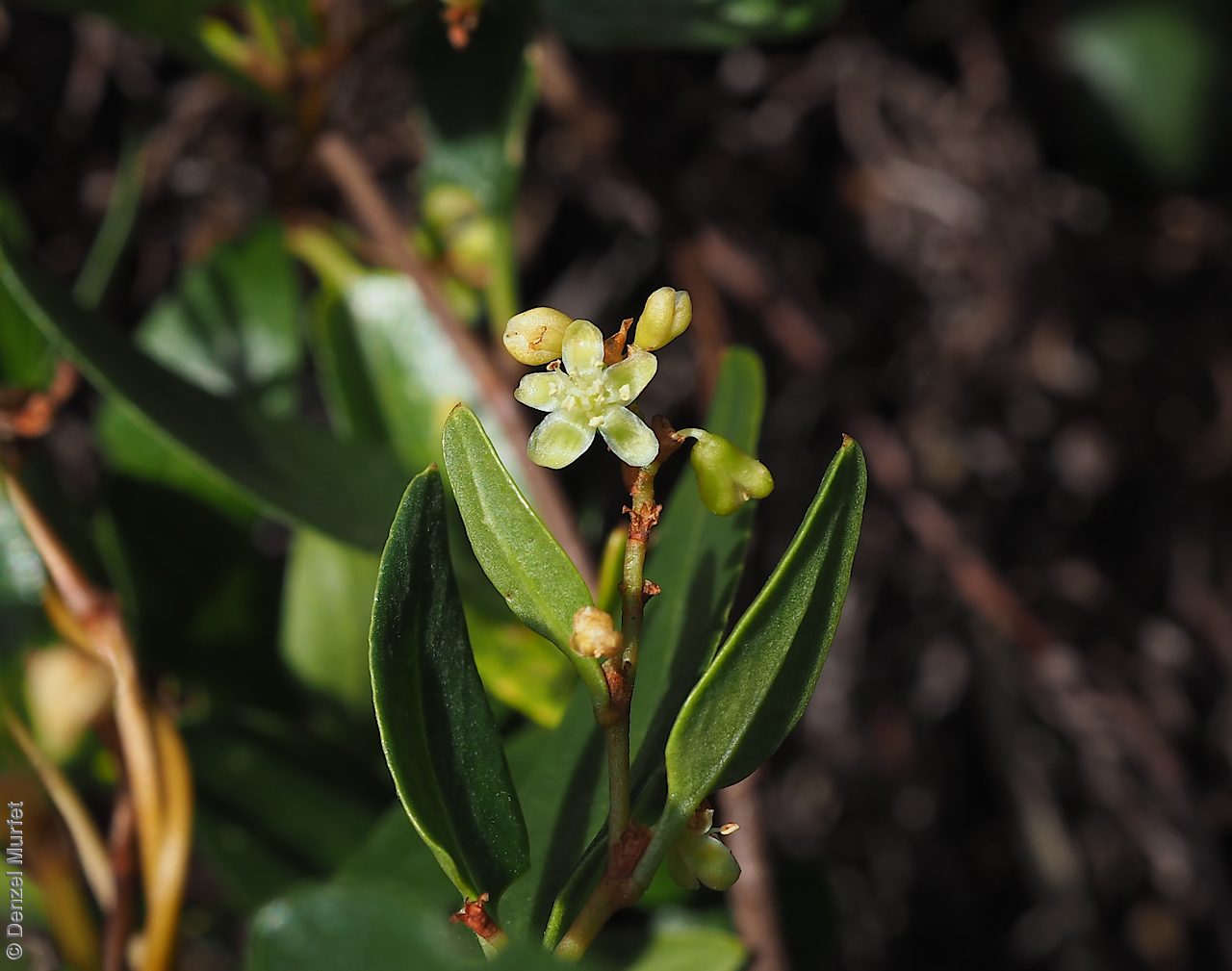
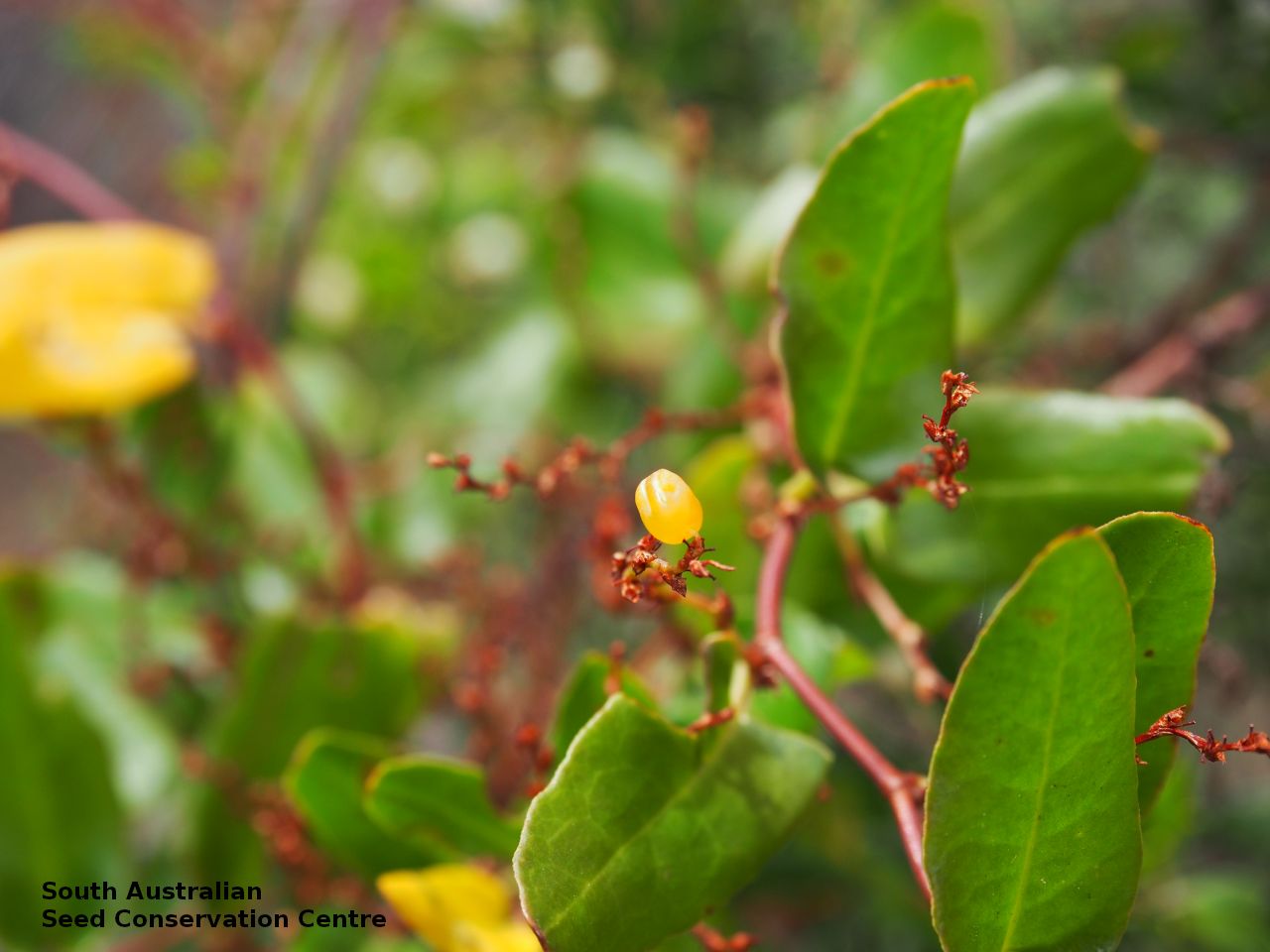
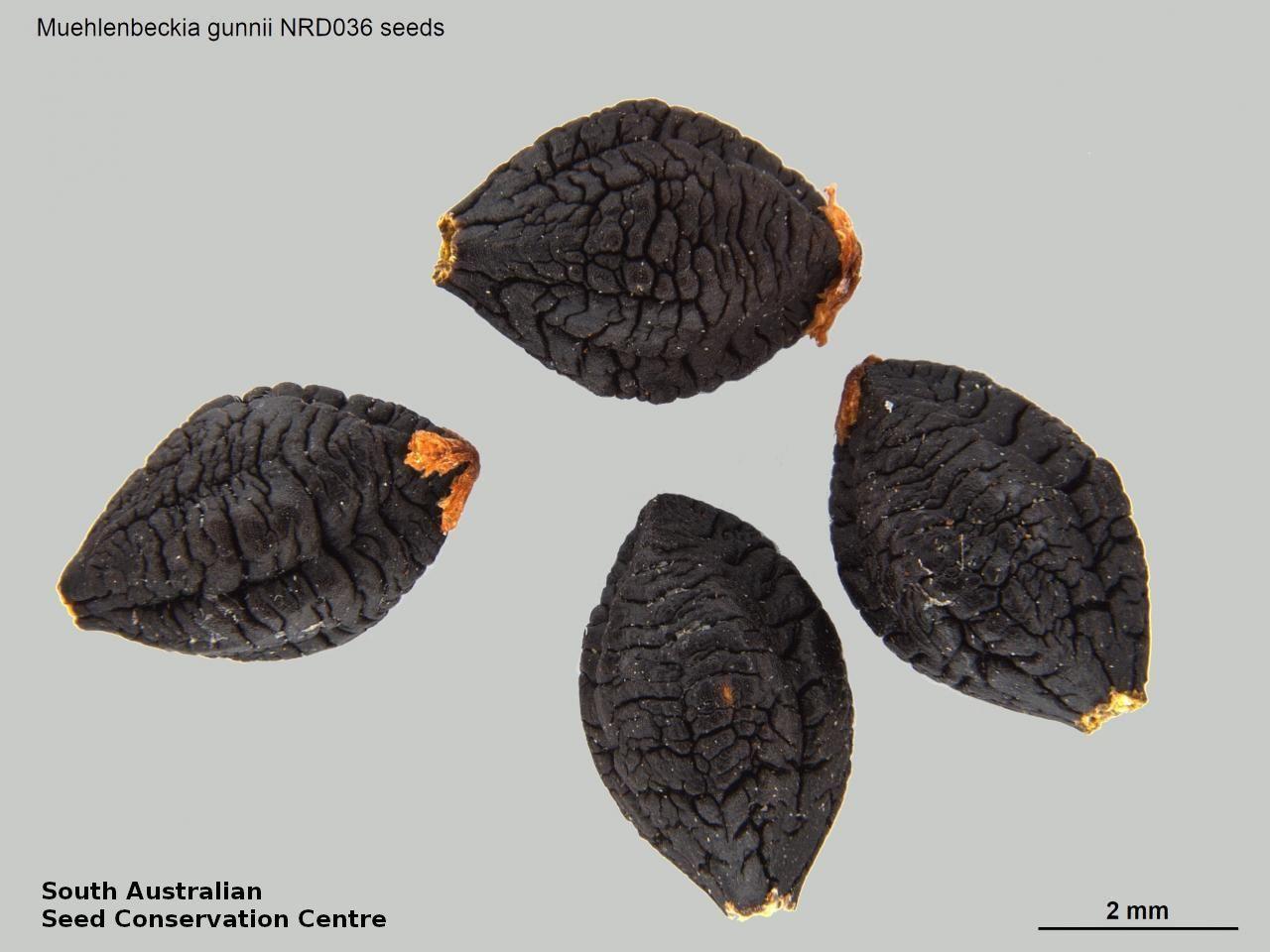
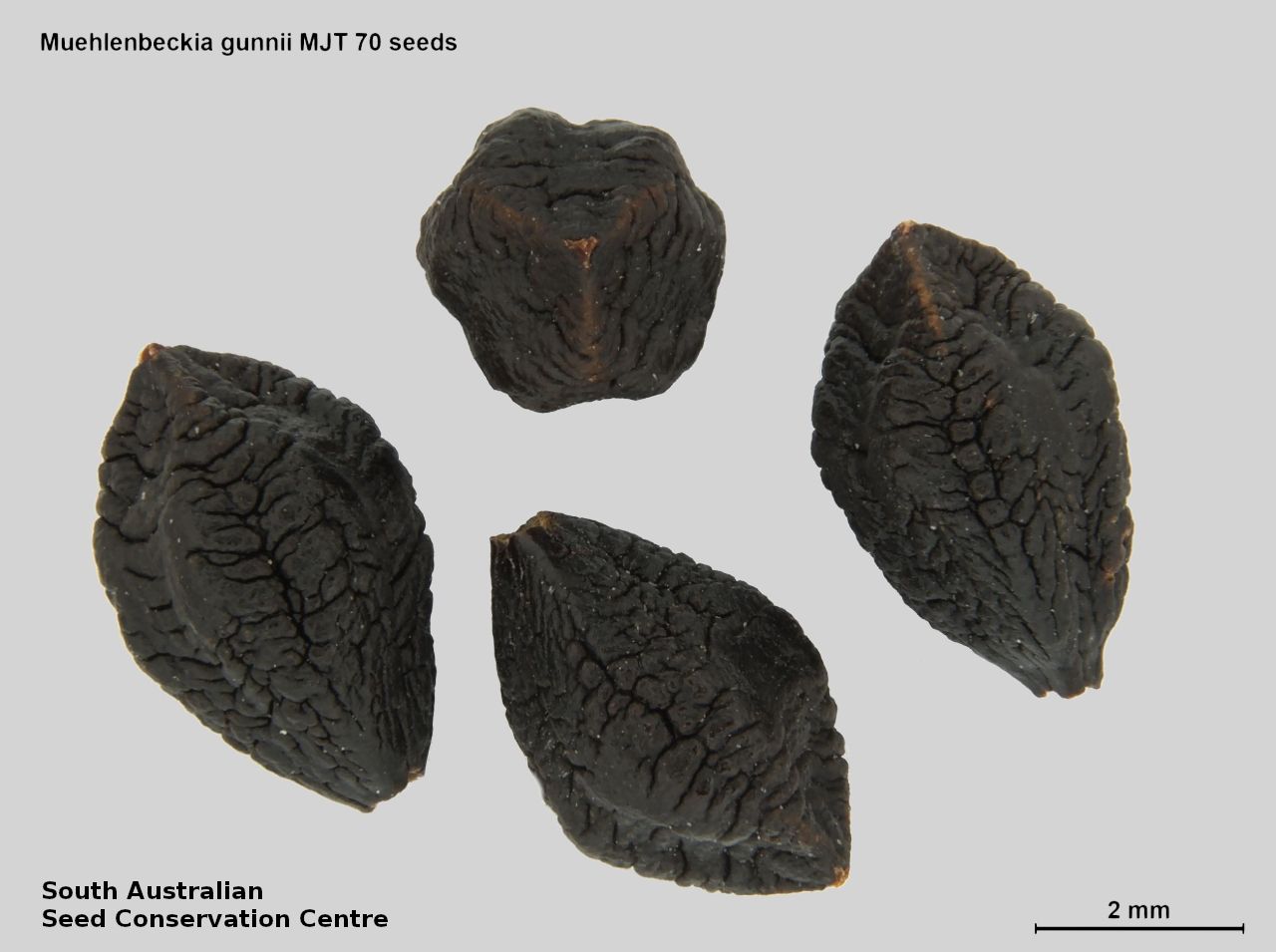

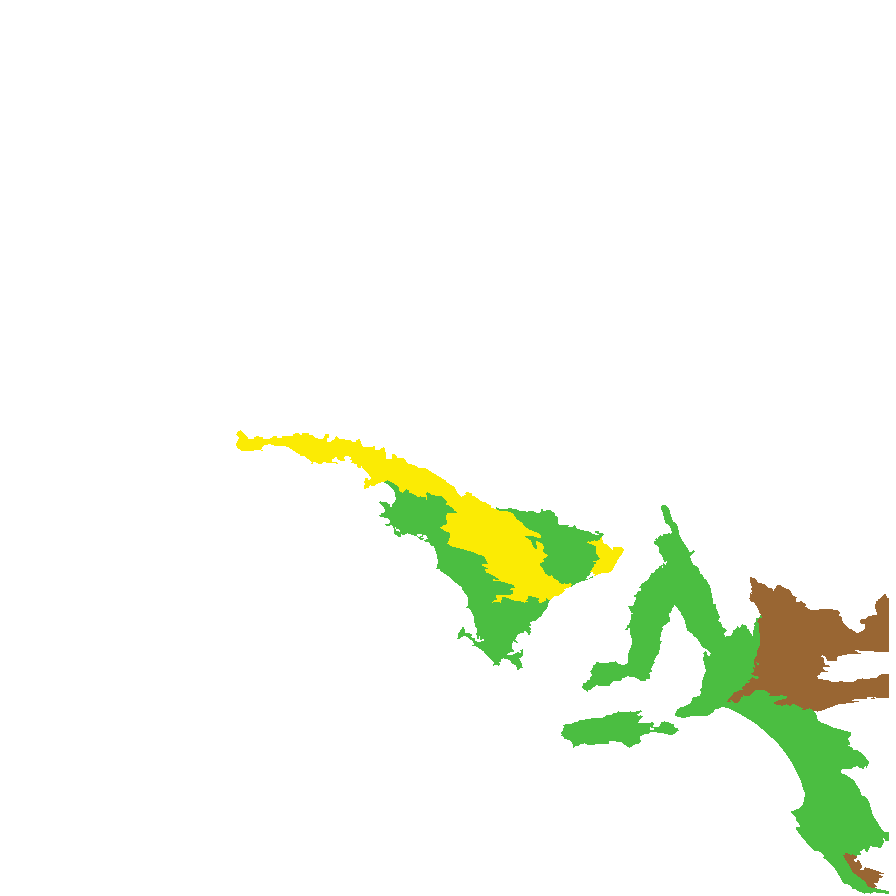
Botanical art
Prior names
Polygonum gunnii
Muehlenbeckia adpressa var. hastifolia
Common names
Native Sarsparilla
Coastal Climbing Lignum
Etymology
Muehlenbeckia, named after Henri Gustav Muehlenbeck (1798-1845), an Alsatian physician and botanist who investigated the flora of Alsace. Gunnii, named after Ronald Campbell Gunn (1808-1881), a British botanist and legislator in Launceston, Tasmania.
Distribution and status
Found in the southern part of South Australia from Eyre Peninsula to the southeast, growing mostly along the coast. Also found in Victoria and Tasmania. Native. Common in South Australia. Uncommon in Victoria. Common in Tasmania.
Herbarium regions: Eyre Peninsula, Yorke Peninsula, Southern Lofty, Kangaroo Island, South Eastern, Green Adelaide
AVH map: SA distribution map (external link)
Plant description
Scrambling, climbing perennial with woody stems to 4 m. Leaves broadly lanceolate-hastate; obtuse or shortly acuminate, to 3 cm long and 1 cm wide. Flowers green. Flowering throughout the year. Fruits are fleshy ovoid fruit with persisting perianth. Fruits turn from green to yellow-orange when ripe. Seeds are black ellipsoid seed to 4 mm long and 3 mm wide, with lateral furrows and a wrinkled surface. Seed embryo type is peripheral.
Seed collection and propagation
Collect seeds between January and December. Collect ripening fruits that are turning yellow and contain a hard black seed. Place fruits in a bucket of water and leave to soak overnight, then rub the fruit to remove the flesh. Rub and change the water a few times until all the fresh is removed. Leave the cleaned seed to dry and then store with a desiccant such as dried silica beads or dry rice, in an air tight container in a cool and dry place. From three collections, the seed viability was average to high, ranging from 75% to 100%. Seeds are non-dormant, viable seed should germinate readily.
| Location | No. of seeds (weight grams) | Number of plants | Date collected | Collection number Collection location | Date stored | % Viability | Storage temperature |
|---|---|---|---|---|---|---|---|
| BGA MSB | 1,000 (13.42 g) 2,900 (33.4 g) | 6 | 30-Aug-2007 | MJT70 Eyre Peninsula | 19-Sep-2008 | 75% | -18°C |
| BGA | 1,100 (15.61 g) | 23-Oct-2013 | NRD36 Southern Lofty | 24-Mar-2015 | 95% | -18°C |
Number of plants: This is the number of plants from which the seeds were collected.
Collection location: The Herbarium of South Australia's region name.
% Viability: Percentage of filled healthy seeds determined by a cut test or x-ray.